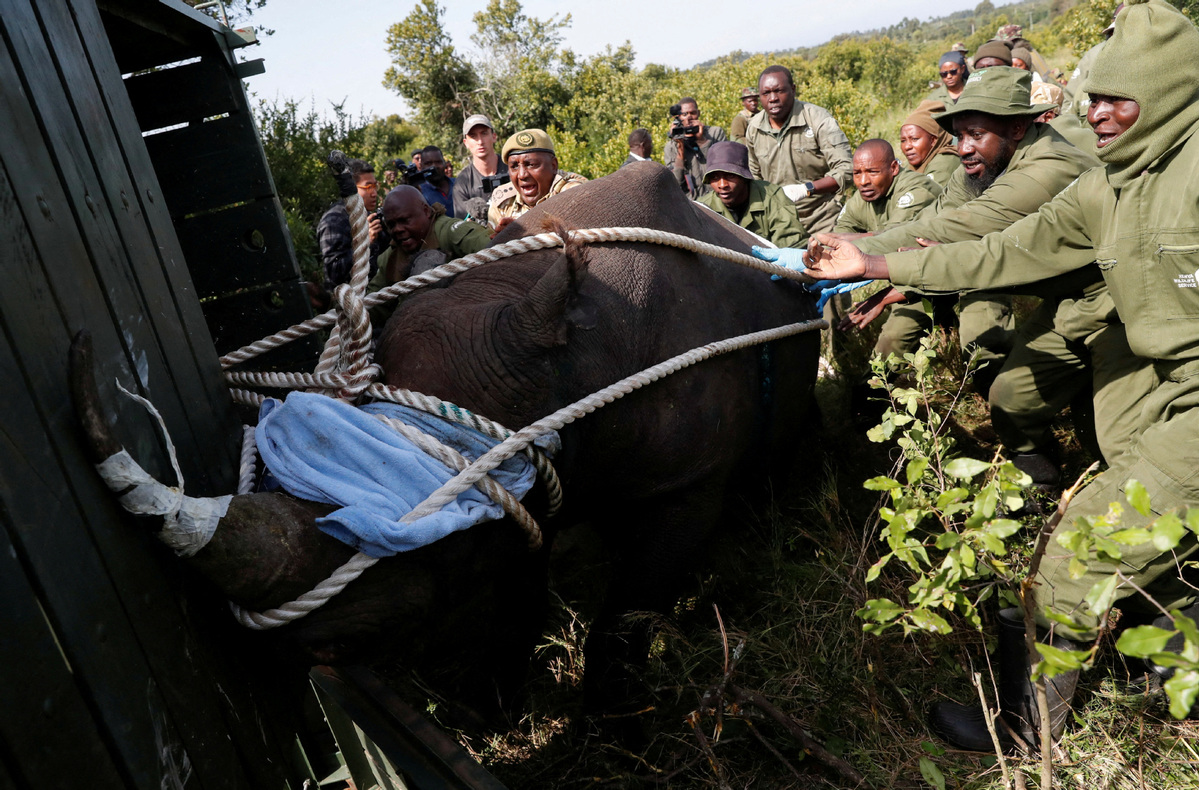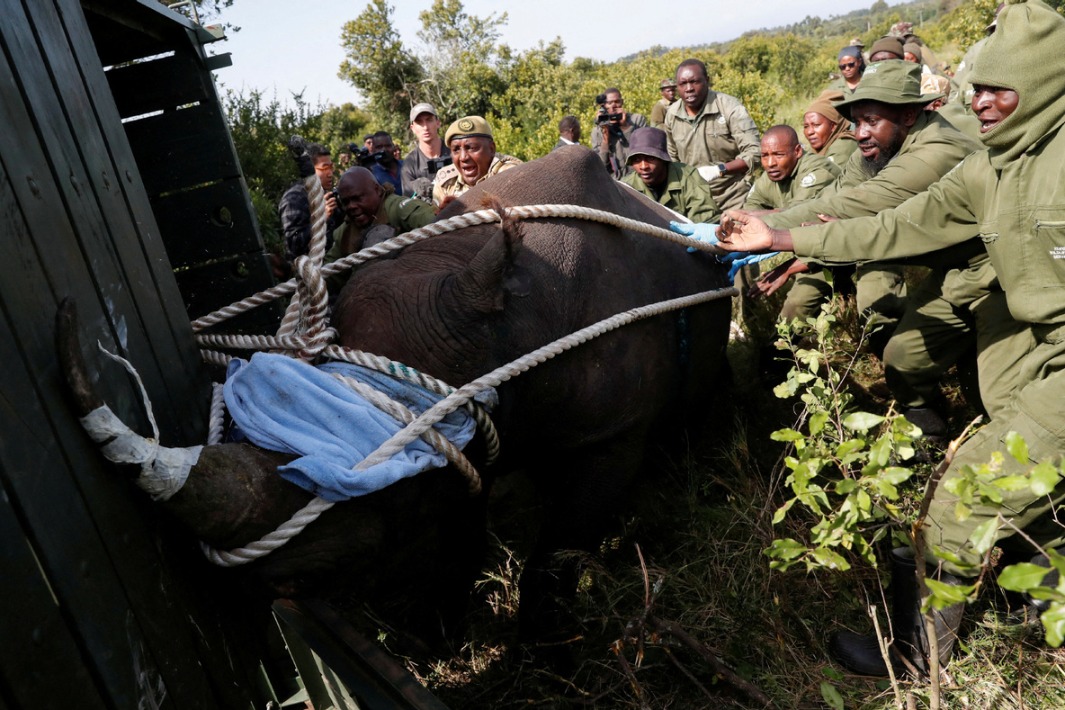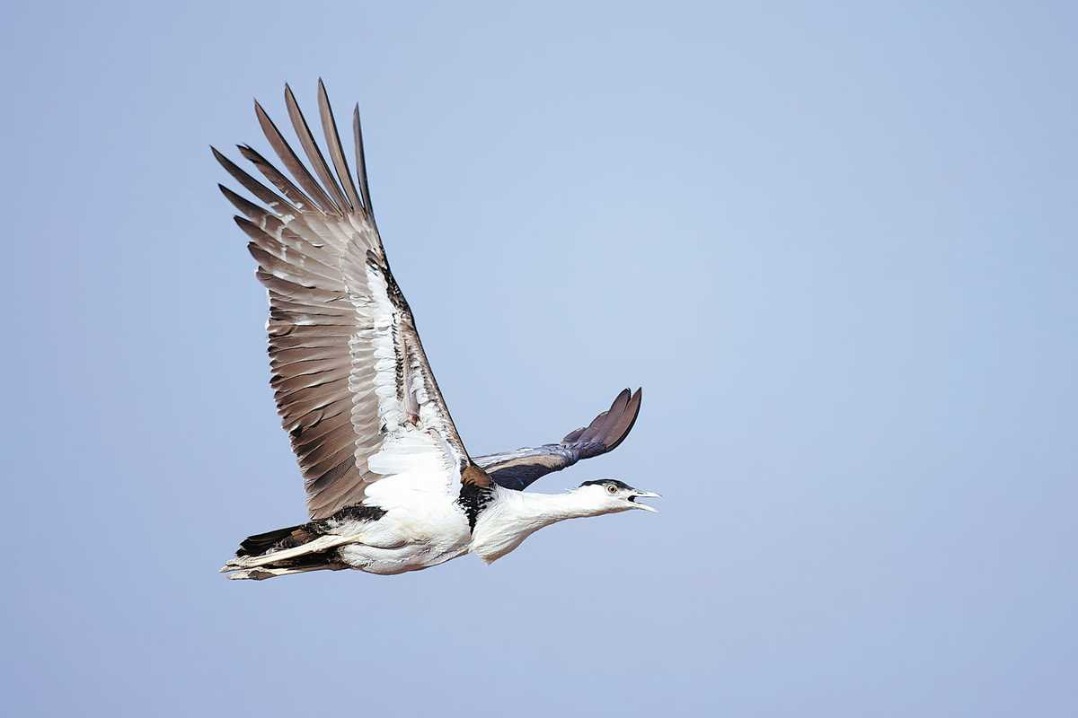Kenya begins relocation of endangered black rhinos


Kenya has begun relocating 21 critically endangered eastern black rhinos from Ol Pejeta Conservancy in Central Kenya, Lewa Wildlife Conservancy in Meru County, and Lake Nakuru National Park to the expansive Segera Rhino Sanctuary in Laikipia County, in a move hailed as a major milestone in national conservation efforts and support the species' long-term survival.
Samuel Mutisya, head of research and species conservation at Ol Pejeta Conservancy, described the exercise as both a scientific and a strategic move.
"We're not just moving rhinos — we're helping to seed a new population that can thrive in a secure and well-managed landscape," Mutisya told China Daily on Monday.
Presiding over the translocation ceremony over the weekend, Kenya's Cabinet Secretary for Tourism and Wildlife Rebecca Miano described the effort as "a bold affirmation of Kenya's enduring commitment to securing a future for one of the world's most iconic yet endangered species".
The Segera Conservancy, which covers more than 20,000 hectares of land, will provide a secure and ecological habitat for their breeding, said Miano. The translocation, which will span 18 days, began with the successful movement of three rhinos to Segera.
The Kenya Wildlife Service, or KWS, said in a statement that before each rhino is moved, it is located via aerial surveillance and immobilized using helicopter darting by a team of veterinarians. The entire operation is timed to be completed within 15 minutes to ensure the safety of the animals.
Once relocated, the rhinos are placed under 24-hour surveillance by KWS specialists to help them adjust to their new surroundings.
Kenya is home to 80 percent of Africa's remaining eastern black rhinos. Their population in the country has grown steadily from just 384 in 1989 to 1,059 last year. Despite this progress, poaching, habitat loss and overcrowding in sanctuaries continue to threaten the species' survival.
Miano noted that Ol Pejeta, Lewa, and Nakuru sanctuaries are operating at over 100 percent capacity, causing frequent territorial clashes that account for more than 30 percent of rhino mortalities.
"By moving rhinos from overcrowded sanctuaries to Segera, we are reducing deadly fights and giving the species a fighting chance."
Kenya's Black Rhino Action Plan for 2022-26 by the Ministry of Tourism aims to double the population to 2,000 by 2037.

































